vscode+babel开发一个智能移除未使用变量的插件(实战)
本篇文章分享一个在vscode中结合babel开发一个智能移除未使用变量插件的方法,希望对大家有所帮助!

vscode 已经成为前端不可缺失的开发工具之一,之所以 vscode 能够获得开发者的青睐,我想和它“无所不能”的插件体系有很大一部分关系。在工作中我们能用它来开发纯工具型的插件,也可以用它开发一些和公司业务相结合的功能插件。在这里我分享一个通过结合babel来实现一个能够智能移除未使用的变量插件,希望对大家开发 vscode 插件有一定的启发和帮助。【推荐学习:《vscode入门教程》】
正文
今天我们首先来熟悉一下 vscode 插件项目的搭建流程
1、使用官方提供的脚手架初始化一个项目
安装脚手架
# npm 形式 npm install -g yo generator-code # yarn 形式 yarn global add yo generator-code
运行脚手架
# 运行脚手架 yo code
选择模板,考虑到有些开发者对 TypeScript 并不熟悉,所以我们这里选择 New Extension (JavaScript)
? What type of extension do you want to create? New Extension (JavaScript) ? What's the name of your extension? rm-unuse-var ? What's the identifier of your extension? rm-unuse-var ? What's the description of your extension? 移除未使用的变量 ? Enable JavaScript type checking in 'jsconfig.json'? Yes ? Initialize a git repository? Yes ? Which package manager to use? yarn
这是我们最终生成的目录结构
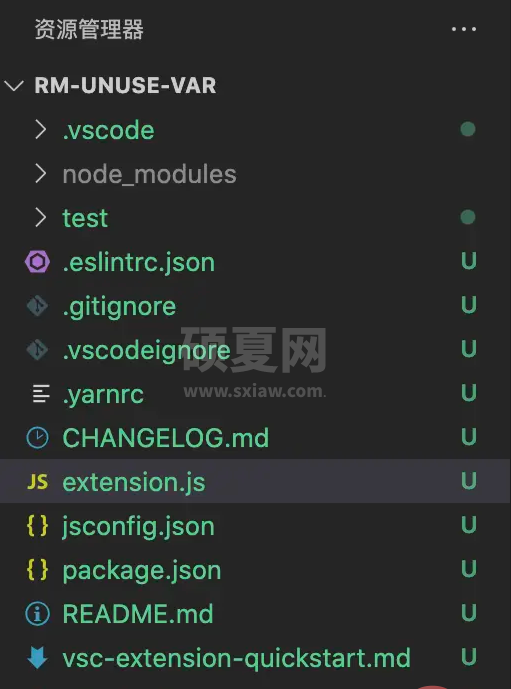
我们先来运行一下这个插件试试
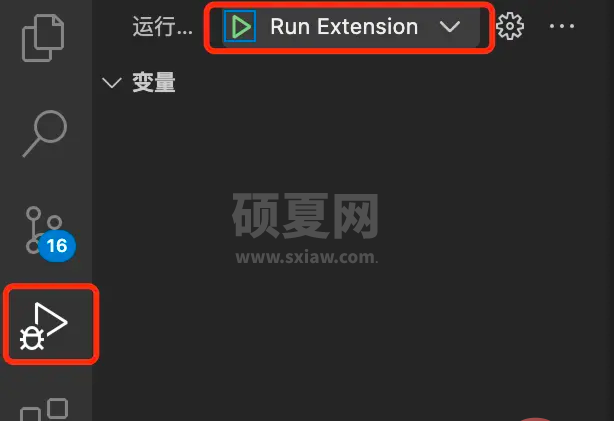
点击上面运行按钮,会打开一个新的 vscode 窗口,在新窗口中按下Ctrl+Shift+P输入Hello World,在窗口右下角会看到一个提示框,说明我们第一个 vscode 插件运行成功运行了。

2、自定义命令、快捷键、菜单
vscode 插件很多功能都是基于一个个命令实现的,我们可以自定义一些命令,这个命令将出现在按下Ctrl+Shift+P后的命令列表里面,同时可以给命令配置快捷键、配置资源管理器菜单、编辑器菜单、标题菜单、下拉菜单、右上角图标等。
3、如何添加命令列表
package.json 部分配置
{
// 扩展的激活事件
"activationEvents": ["onCommand:rm-unuse-var.helloWorld"],
// 入口文件
"main": "./extension.js",
// 添加指令
"contributes": {
"commands": [
{
// 这里的值必须和activationEvents里面配置的一样
"command": "rm-unuse-var.helloWorld",
// 这个就是我们指令的名称,可以修改这里的值重新运行插件试试看
"title": "Hello World"
}
]
}
}在开发中快捷键的使用方式是最便捷的,接下来我们修改一下配置,让插件支持快捷键的方式运行。
{
"contributes": {
"commands": [
{
// 这里的值必须和activationEvents里面配置的一样
"command": "rm-unuse-var.helloWorld",
// 这个就是我们指令的名称,可以修改这里的值重新运行插件试试看
"title": "Hello World"
}
],
// 快捷键绑定
"keybindings": [
{
"command": "rm-unuse-var.helloWorld",
"key": "ctrl+6",
"mac": "cmd+6"
}
]
}
}我们再重新运行一下,通过快捷键Ctrl+6看看我们的插件是否能够正常运行。没错就是这么简单,我们的插件已经能够支持快捷键的形式运行了。
4、叫 helloWorld 太土了,下一步我们来修改一下指令的名称
package.json
{
"activationEvents": ["onCommand:rm-unuse-var.rm-js-var"],
"main": "./extension.js",
"contributes": {
"commands": [
{
"command": "rm-unuse-var.rm-js-var",
"title": "Hello World"
}
],
"keybindings": [
{
"command": "rm-unuse-var.rm-js-var",
"key": "ctrl+6",
"mac": "cmd+6"
}
]
}
}因为我们在extension.js中注册了指令的名称,所以也要同步修改
let disposable = vscode.commands.registerCommand( "rm-unuse-var.rm-js-var", function () { vscode.window.showInformationMessage("Hello World from rm-unuse-var!"); } );
5、安装babel相关库
我们修改代码可以分为 3 个步骤
1、将代码解析成 AST 语法树 2、遍历修改 AST 语法树 3、根据修改过的 AST 语法树生成新的代码
这 3 个步骤 babel 都有对应的库来处理
@babel/parser生成 AST 语法树,文档地址(https://www.babeljs.cn/docs/babel-parser)@babel/traverse遍历 AST 语法树,文档地址(https://www.babeljs.cn/docs/babel-traverse)@babel/generator根据 AST 语法树生成代码,文档地址(https://www.babeljs.cn/docs/babel-generator)@babel/types工具库,文档地址(https://www.babeljs.cn/docs/babel-types)
6、我们来看下这些库的基本用法,比如实现一个将 es6 的箭头函数转换成普通函数
转换前
const say = () => {
console.log("hello");
};转换后
function say() {
console.log("hello");
}代码实现,代码部分写死仅供学习参考
const t = require("@babel/types");
const parser = require("@babel/parser");
const traverse = require("@babel/traverse").default;
const generate = require("@babel/generator").default;
// 1、将代码解析成 AST 语法树
const ast = parser.parse(`const say = () => {
console.log("hello");
};`);
// 2、遍历修改 AST 语法树
traverse(ast, {
VariableDeclaration(path) {
const { node } = path;
// 写死找到第一个申明
const declaration = node.declarations[0];
// 定义的内容
const init = declaration.init;
// 判断是否是箭头函数
if (t.isArrowFunctionExpression(init)) {
// 将原来的表达式替换成新生成的函数
path.replaceWith(
t.functionDeclaration(
declaration.id,
init.params,
init.body,
init.generator,
init.async
)
);
}
},
});
// 3、根据修改过的 AST 语法树生成新的代码
console.log(generate(ast).code);
/*
function say() {
console.log("hello");
}
*/很多同学肯定好奇现在我们的表达式比较简单还好,如果复杂的话定义嵌套会非常深和复杂,这个时候应该怎么知道去替换哪个节点?。其实这里可以借助astexplorer.net/ 这是一个在线转换 AST 的网站。我们可以打开两个窗口,把转换前的代码放到第一个窗口,把需要转换的接口放到第二个窗口。这个时候我们就可以对比一下转换前后的差异,来实现我们的代码了。

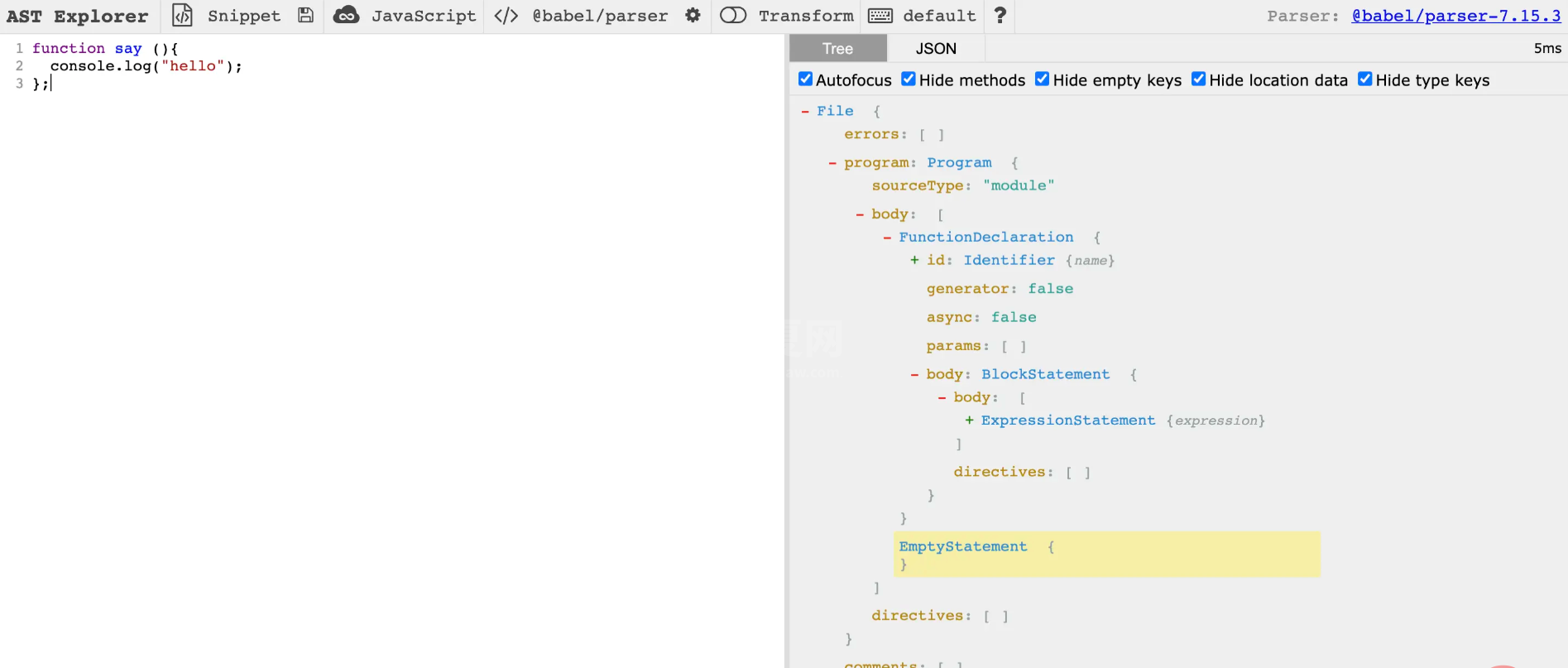
6、思考插件如何实现?
1、获取编辑器当前打开的 js 文件的代码 2、将代码解析成 AST 语法树 3、遍历 AST 语法树,删除未使用的定义 4、根据修改过的 AST 语法树生成新的代码 5、替换当前 js 文件的代码
其中 2、4 我们已经会了,接下来只需要看下 1、3、5 如何实现就行
1 和 5 我们可以通过 vscode 提供的方法
1、获取编辑器当前打开的 js 文件的代码
import * as vscode from "vscode"; // 当前打开的文件 const { activeTextEditor } = vscode.window; // 然后通过document下的getText就能轻松获取到我们的代码了 const code = activeTextEditor.document.getText();
5、替换当前 js 文件的代码
activeTextEditor.edit((editBuilder) => {
editBuilder.replace(
// 因为我们要全文件替换,所以我们需要定义一个从头到位的区间
new vscode.Range(
new vscode.Position(0, 0),
new vscode.Position(activeTextEditor.document.lineCount + 1, 0)
),
// 我们的新代码
generate(ast).code
);
});好了接下来我们就剩核心的第 3 步了。
3、遍历 AST 语法树,删除未使用的定义
我们先来分析一下,未使用的定义包含了哪些?
import vue from "vue";
const a = { test1: 1, test2: 2 };
const { test1, test2 } = a;
function b() {}
let c = () => {};
var d = () => {};然后在线 ast 转换网站,复制这些内容进去看看生成的语法树结构

我们先来实现一个例子吧,比如把下面代码中没有用的变量移除掉
转换前
var a = 1; var b = 2; console.log(a);
转换后
var a = 1; console.log(a);
- scope.getBinding(name) 获取当前所有绑定
- scope.getBinding(name).referenced 绑定是否被引用
- scope.getBinding(name).constantViolations 获取当前所有绑定修改
- scope.getBinding(name).referencePaths 获取当前所有绑定路径
代码实现
const t = require("@babel/types");
const parser = require("@babel/parser");
const traverse = require("@babel/traverse").default;
const generate = require("@babel/generator").default;
const ast = parser.parse(`var a = 1;
var b = 2;
console.log(a);`);
traverse(ast, {
VariableDeclaration(path) {
const { node } = path;
const { declarations } = node;
// 此处便利可以处理 const a = 1,b = 2; 这种场景
node.declarations = declarations.filter((declaration) => {
const { id } = declaration;
// const { b, c } = a;
if (t.isObjectPattern(id)) {
// path.scope.getBinding(name).referenced 判断变量是否被引用
// 通过filter移除掉没有使用的变量
id.properties = id.properties.filter((property) => {
const binding = path.scope.getBinding(property.key.name);
return !!binding?.referenced;
});
// 如果对象中所有变量都没有被应用,则该对象整个移除
return id.properties.length > 0;
} else {
// const a = 1;
const binding = path.scope.getBinding(id.name);
return !!binding?.referenced;
}
});
// 如果整个定义语句都没有被引用则整个移除
if (node.declarations.length === 0) {
path.remove();
}
},
});
console.log(generate(ast).code);7、了解基本处理流程之后,我们就来看下最终的代码实现吧
const t = require("@babel/types");
const parser = require("@babel/parser");
const traverse = require("@babel/traverse").default;
const generate = require("@babel/generator").default;
const ast = parser.parse(
`import vue from 'vue';
var a = 1;
var b = 2;
var { test1, test2 } = { test1: 1, test2: 2 };
function c(){}
function d(){}
d();
console.log(a, test1);`,
{
sourceType: "module",
}
);
traverse(ast, {
// 处理 const var let
VariableDeclaration(path) {
const { node } = path;
const { declarations } = node;
node.declarations = declarations.filter((declaration) => {
const { id } = declaration;
if (t.isObjectPattern(id)) {
id.properties = id.properties.filter((property) => {
const binding = path.scope.getBinding(property.key.name);
return !!binding?.referenced;
});
return id.properties.length > 0;
} else {
const binding = path.scope.getBinding(id.name);
return !!binding?.referenced;
}
});
if (node.declarations.length === 0) {
path.remove();
}
},
// 处理 import
ImportDeclaration(path) {
const { node } = path;
const { specifiers } = node;
if (!specifiers.length) {
return;
}
node.specifiers = specifiers.filter((specifier) => {
const { local } = specifier;
const binding = path.scope.getBinding(local.name);
return !!binding?.referenced;
});
if (node.specifiers.length === 0) {
path.remove();
}
},
// 处理 function
FunctionDeclaration(path) {
const { node } = path;
const { id } = node;
const binding = path.scope.getBinding(id.name);
if (!binding?.referenced) {
path.remove();
}
},
});
console.log(generate(ast).code);8、vscode 设置我们的插件只支持 js 文件的限制
因为我们现在实现是针对 js 文件的,所以打开其他类型的文件我们可以让我们的快捷键失效。
我们可以修改package.jsonpackage.json
{
"contributes": {
"commands": [
{
"command": "rm-unuse-var.remove",
"title": "Hello World"
}
],
"keybindings": [
{
"command": "rm-unuse-var.remove",
"key": "ctrl+6",
"mac": "cmd+6",
"when": "resourceLangId == javascript"
}
]
}
}9、整合到我们前面创建的项目中去
此处省略... 相信看了上面这些介绍大家已经完全有能力自己整合了
10、打包发布插件
打包我们可以vsce工具
全局安装 vsce
# npm npm i vsce -g # yarn yarn global add vsce
打包插件
打包前先修改 README.md 文件否则会报错
vsce package
执行完毕之后会生成一个.vsix 文件
如果要在本地 vscode 使用可以直接导入
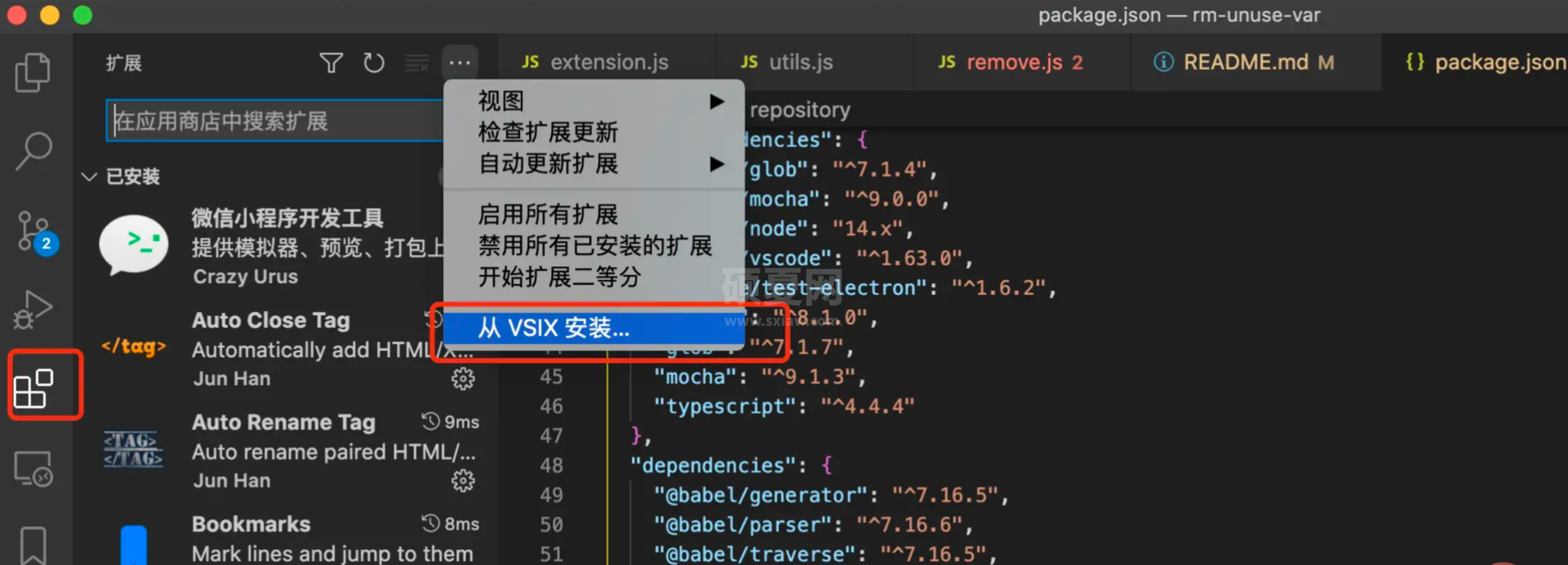
如果要发布到市场的话,我们需要先注册账号 https://code.visualstudio.com/api/working-with-extensions/publishing-extension#publishing-extensions
# 登录账号 vsce login your-publisher-name # 发布 vsce publish
发布成功之后就能在我们的市场上看到了 marketplace.visualstudio.com/items?itemN… 也可以在 vscode 中搜索打我们的插件
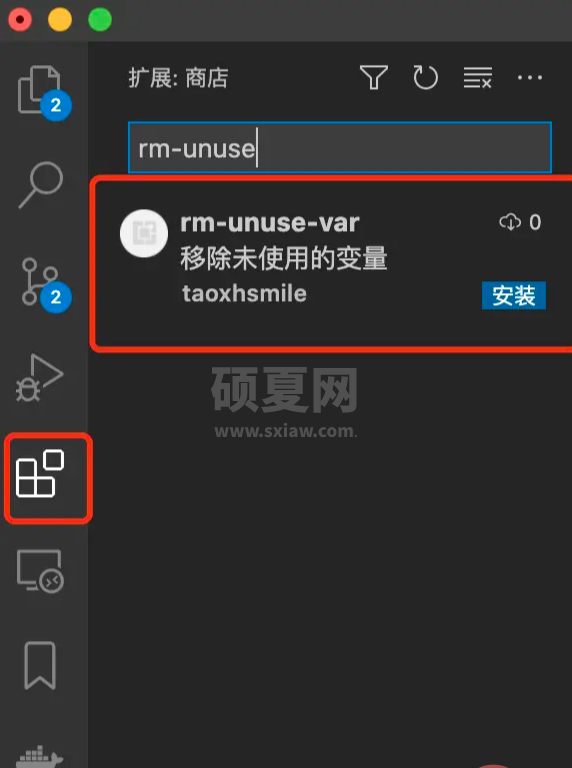
总结
到此为止,相信大家对 vscode 插件开发的基本流程已经有了了解。
觉得文章对你有所帮助,可以点个赞
当然 vscode 插件还有非常多的配置没有介绍,后面如果有时间可以单独整理成一篇文章来介绍
如果在开发过程中有问题或者其他前端技术问题也可以加我微信rjjs1221交流,或者直接在评论区回复。
源码地址 https://github.com/taoxhsmile/rm-unuse-var
更多关于VSCode的相关知识,请访问:vscode教程!!
以上就是vscode+babel开发一个智能移除未使用变量的插件(实战)的详细内容,更多请关注www.sxiaw.com其它相关文章!
